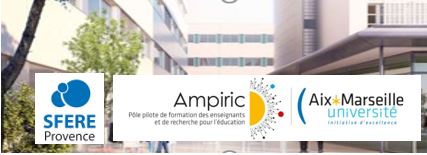Les questions de créativité qu'elles soient pédagogiques, en recherche, au travail, de production artistique... sont fortement liées aux émotions et la littérature scientifique abonde sur le lien entre créativité, apprentissage et émotion (pour une revue, Yakhloufi, Brugaud, Vidal & Syssau, 2020). Les conditions de créativité collective dépendent du contexte socio-culturel dans lequel il est demandé aux sujets d'élaborer de nouvelles idées (une des multiples définitions de la créativité). Elles nécessitent de ce fait un contexte qui peut être conçu comme « capacitant » (Falzon, 2013) et qu'il tient aux acteurs pédagogiques de favoriser (le chef d'établissement, les enseignants de l'équipe pédagogique). Entre autres, la prise en compte de l'émotion dans sa dimension « contagieuse » (Van Hoorebeke, 2018), plus qu'un frein (lorsqu'elle se présente dans sa dimension négative), peut apparaître comme un réel appui à la co-construction de projets structurants et innovants pour l'établissement scolaire.
Notre recherche a interrogé le levier que peut constituer un partage d'émotion dans un climat de confiance positif pour un collectif d'enseignants, mis en place par un chef d'établissement scolaire afin de favoriser le processus de créativité de l'équipe pédagogique.
Cette étude propose une analyse par entretiens semi-directifs de l'activité de préparation et de conduite de réunion pédagogique qui intègre le facteur émotionnel, temporel, médiateur, dispositionnel et d'écoute du coordonnateur (une directrice) lors du séminaire pédagogique de fin d'année scolaire. Les entretiens ont été également menés auprès des enseignants (16 enseignant.e.s) dans le but de recueillir (en post séminaire) les affects durant le processus de créativité et l'identification (ou non) des différents facteurs facilitateurs du contexte capacitant.
Pour ceux qu'ils ont d'essentiel nos résultats indiquent que la totalité des facteurs facilitateurs dans le cadre de réunion ne sont pas tous identifiés par l'ensemble des enseignants mais chacun se réfère à un climat général bienveillant et la nécessité de partager avec le groupe, de façon systématique, les émotions et les représentations de chacun relatives aux questions soulevées en réunion (Alcaras-Will, 2017). « Partager » et laisser le temps du partage ainsi que le positionnement humble avec peu de distance de pouvoir avec les enseignants (Hu, Erdogan, Jiang, Bauer & Liu, 2018) lors de la conduite de réunion semble essentiel à la créativité du groupe. Ces conduites permettent l'élaboration des nouveaux projets annuels en vue de donner du sens à l'acte d'enseigner pour les enseignants et du sens in fineaux apprentissages des élèves (Alcaras-Will, 2017).
MOTS CLES
Emotion ; Projet pédagogique ; Contexte capacitant
ABSTRACT
Creativity, whether in education, research, work, artistic production ... are strongly linked to emotions, and scientific literature abounds on the link between creativity, learning and emotion (for a scientific review, Yakhloufi, Brugaud, Vidal & Syssau, 2020).
The conditions for collective creativity depend on the socio-cultural context in which subjects are asked to develop new ideas (one of the many definitions of creativity). They therefore require an anabling context (Falzon, 2013). It is up to the pedagogical protagonists to encourage it (the headteacher, the teachers team). The consideration of the emotion and his « contagious role » (Van Hoorebeke, 2018) is a support to the co-construction of collective, structuring and innovative school project.
Our research investigates the sharing of emotion in a climate of positive confidence for a group of teachers, set up by a school headteacher to encourage the creative process of the teaching team.
The purpose on this study is to analyse by semi-structured interviews about the activity of preparing and conducting a pedagogical meeting which integrates the emotional, temporal, mediating, dispositional and listening factors of the coordinator (a headteatcher woman) during the pedagogical seminar at the end of the school year. Interviews were also conducted with the teachers (16 teachers women and men) in order to collect (in the post seminar) the affects during the process of creativity and the identification (or not) of the different facilitating factors of the enabling context.
For the essential ones, our results indicate that not all of the facilitating factors in meetings are identified by all teachers, but each refers to a general kindness climate and in a systematic way, the need to share with the group everyone's emotions and representations regarding the issues raised in the meeting (Alcaras-Will, 2017).
« Sharing » and allowing time for sharing, and also positioning humbly with little power distance from teachers (Hu, Erdogan, Jiang, Bauer & Liu, 2018) during conducting meetings, seem essential to the creativity of the group. These arrangements allow the development of new annual projects to give meaning to the act of teaching for teachers and ultimately meaning to student learning (Alcaras-Will, 2017).
KEYWORDS
Emotion ; Pedagogical project; Anabling context
REFERENCES
Alcaras-Will (2017). Pédagogie du Sens II : Le projet thématique annuel. Ed. Philosphère
Falzon, P. (2013). Pour une ergonomie constructive. In P. Falzon (Ed.), Ergonomie constructive (pp. 1-15). Paris : PUF.
Hu, J., Erdogan, B., Jiang, K. Bauer, T.N., & Liu, S. (2018). Leader Humility and Team Creativity: The Role of Team Information Sharing, Psychological Safety, and Power Distance. Journal of Applied Psychology, 103(3), 313-323.
Van Hoorebeke, D. (2008). L'émotion et la prise de décision. Revue française de gestion, vol.182, no. 2, 33-44.
Yakhloufi, A.B., Brugaud, E., Vidal, J., & Syssau, A. (2020). La créativité en équipe diversifiée : une stratégie payante ?Canadian Psychology, 61 (1), 58-71.

 PDF version
PDF version
